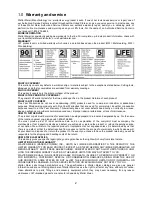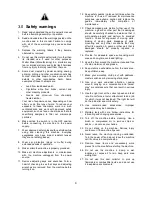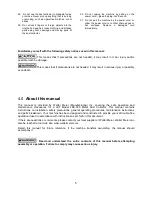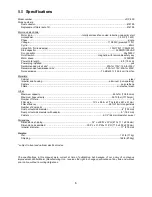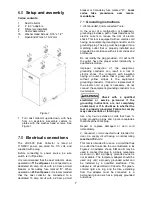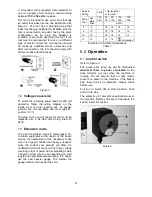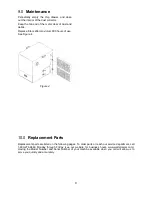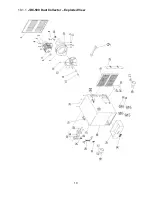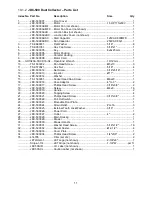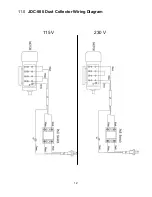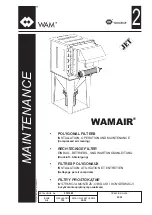
4
3.0
Safety warnings
1. Read and understand the entire owner's manual
before attempting assembly or operation.
2. Read and understand the warnings posted on the
machine and in this manual. Failure to comply
with all of these warnings may cause serious
injury.
3. Replace the warning labels if they become
obscured or removed.
4. Do not use this metal dust collector for other than
its intended use. If used for other purposes,
Walter Meier (Manufacturing) Inc., disclaims any
real or implied warranty and holds itself harmless
from any injury that may result from that use.
5. Some dust created by power sanding, sawing,
grinding, drilling and other construction activities
contain chemicals known to cause cancer, birth
defects or other reproductive harm. Some
examples of these chemicals are:
•
Lead from lead based paint.
•
Crystalline silica from bricks, cement and
other masonry products.
•
Arsenic and chromium from chemically
treated lumber.
Your risk of exposure varies, depending on how
often you do this type of work. To reduce your
exposure to these chemicals, work in a well-
ventilated area and work with approved safety
equipment, such as face or dust masks that are
specifically designed to filter out microscopic
particles.
6. Make certain the switch is in the OFF position
before connecting the machine to the power
supply.
7. Wear approved safety glasses/face shields while
using and cleaning this machine. Everyday
eyeglasses only have impact resistant lenses;
they are not safety glasses.
8. Wear ear protectors (plugs or muffs) during
extended periods of operation.
9. Make certain the machine is properly grounded.
10. Make all machine adjustments or maintenance
with the machine unplugged from the power
source.
11. Remove adjusting keys and wrenches. Form a
habit of checking to see that keys and adjusting
wrenches are removed from the machine before
turning it on.
12. Keep safety guards in place at all times when the
machine is in use. If removed for maintenance
purposes, use extreme caution and replace the
guards immediately after completion of
maintenance.
13. Check damaged parts. Before further use of the
machine, a guard or other part that is damaged
should be carefully checked to determine that it
will operate properly and perform its intended
function. Check for alignment of moving parts,
binding of moving parts, breakage of parts,
mounting and any other conditions that may
affect its operation. A guard or other part that is
damaged should be properly repaired or
replaced.
14. Provide for adequate space surrounding work
area and non-glare, overhead lighting.
15. Keep the floor around the machine clean and free
of scrap material, oil and grease.
16. Keep visitors a safe distance from the work area.
Keep children away.
17. Make your workshop child proof with padlocks,
master switches or by removing starter keys.
18. Give your work undivided attention. Looking
around, carrying on a conversation and “horse-
play” are careless acts that can result in serious
injury.
19. Use the right tool at the correct speed and feed
rate. Do not force a tool or attachment to do a job
for which it was not designed. The right tool will
do the job better and more safely.
20.
Use recommended accessories; improper
accessories may be hazardous.
21. Maintain tools with care. Follow instructions for
lubricating and changing accessories.
22. Turn off the machine before cleaning. Use a
brush or compressed air to remove chips or
debris — do not use your hands.
23. Do not stand on the machine. Serious injury
could occur if the machine tips over.
24. Never leave the machine running unattended.
Turn the power off and do not leave the machine
until it comes to a complete stop.
25. Remove loose items and unnecessary work
pieces from the area before starting the machine.
26. Do not use this machine in damp or wet
locations, or expose it to rain. Keep work area
well lighted.
27. Do not use this dust collector to pick up
flammable or combustible liquids, and do not use
it in explosive environments.


